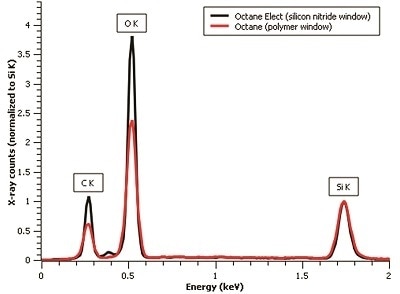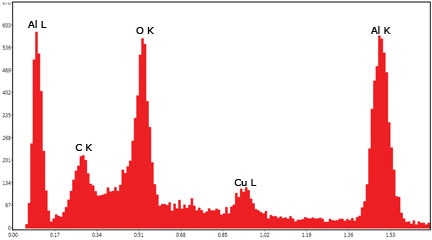The Octane Elect EDS System – the improved Energy Dispersive Spectroscopy (EDS) platform – features the latest advancements in high speed electronics and Silicon Drift Detector (SDD) technology. The EDS System has been customized for users who require higher functionality and performance than the options provided in entry-level systems. It offers excellent resolution and high throughput at an optimal value with unprecedented low energy sensitivity for low voltage (kV) microanalysis and light element detection.
Octane Elect Silicon Drift Detectors
The Octane Elect SDDs include a manual slide, a silicon nitride (Si3N4) window, and high speed electronics. In addition, the Octane Elect SDDs can be integrated with EDAX's Electron Backscatter Diffraction (EBSD) camera as part of the Pegasus EDS-EBSD Analysis System, offering seamless integration for both crystal structure and elemental composition analysis in a user-friendly package.
The Octane Elect SDDs are available in two models:
- Octane Elect Plus - 30 mm2 chip
- Octane Elect Super - 70 mm2 chip
Best Light Element Performance
Featuring a Si3N4 window, the Octane Elect SDD provides significant transmission enhancements when compared to detectors with a polymer window. This results in better light element performance and provides more important data to materials analysts.
Low kV Performance
Silicon nitride’s mechanical properties enable the use of thinly fabricated windows with a low aspect ratio support grid, providing a major advantage in terms of low energy sensitivity and optimal low voltage analysis.

Spectra acquired from a silicon dioxide sample at 10 kV. The comparison of the scaled spectra to the Si K peak clearly shows the increased oxygen and carbon peak intensities achieved with a Si3N4 window.
Benefits
Optimized SDD Electronics for stable energy at high collection rates
- Optimized data quality at all count rates
- Fast pulse processing for mapping and quantification
- High resolution quantitative analysis at mapping speeds higher than 400,000 output cps
Throughput
Integrated with advanced detection electronics, the EDAX EDS systems provide the highest throughput count rate available on the market for increased productivity and the best possible analysis.

Al L to Al K peak height ratio of 1:1 at 2.5 kV
Reliability
The design of the SDDs together with the durability and material properties of the Si3N4 window provides the most reliable and robust detectors for all EDS applications. The unique module design means they are suitable for plasma cleaning and resistant to shock and corrosion.
APEX™ EDS Analysis Software allows users to optimize their analysis time and get the best possible data from their sample
- APEX ensures high-quality, accurate results and increased productivity with its easy-to-use interface, live-time graphical display, and simultaneous review mode. Visit the APEX Software page for more information.
- Standard with APEX™ Analysis Software for EDS applications
- EDAX Analysis Software available for integrated EDS-EBSD applications